
- Permbajtja
- prev
- next
- prev
- next
HIGHLIGHT: JURGEN MAYER
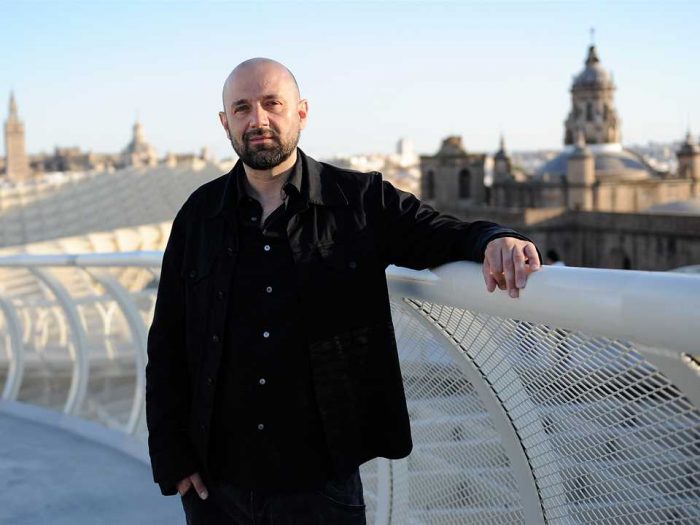
Jürgen Hermann Mayer (born 1965 in Stuttgart) is a German architect and artist. He is the leader of the architecture firm "J. MAYER H." in Berlin and calls himself Jürgen Mayer H.
Life and work
He studied at Stuttgart University, The Cooper Union and Princeton University. Since 1996 he has been working as an architect. Recent national and international projects include Metropol Parasol, the redevelopment of the Plaza de la Encarnación in Seville, Spain; the Court of Justice in Hasselt, Belgium; Pavilion KA300, built in celebration of Karlsruhe's 300th jubilee, and several public and infrastructural projects in Georgia—for example, an airport in Mestia, the border checkpoint in Sarpi, and three rest stops along the highway in Gori and Lochini. His work has been published and exhibited worldwide and is part of numerous collections including Museum of Modern Art (MoMA) New York and MoMA San Francisco and also private collections. National and international awards include the Mies-van-der-Rohe-Award-Emerging-Architect-Special-Mention-2003, Winner Holcim Award Bronze 2005 and Winner Audi Urban Future Award 2010. He has taught at Princeton University, Harvard University, Berlin University of the Arts, the Technical University of Munich, the Architectural Association in London, the Columbia University, New York City, at the University of Toronto, Canada, and has been a mentor at the international mentorship program Forecast, based in Berlin.
Firm
J. MAYER H. was founded 1996 in Berlin. Since January 2014, when Andre Santer and Hans Schneider joined as partners in the firm, it has been called J. Mayer H. und Partner, Architekten. It focuses on works at the intersection of architecture, communication, and new technology. From urban planning schemes and buildings, to installation work and objects with new materials, the relationship between the human body, technology, and nature form the background for a new production of space.
Awards
- Mies-van-der-Rohe Award for emerging architects, 2003
- Holcim Award Bronze for the European region, 2005
- Audi Urban Future Award, 2010
- red dot design award, 2012, for Metropol Parasol
- Finalist European Union Prize for Contemporary Architecture, 2013 for Metropol Parasol
Projects
Positive Negative
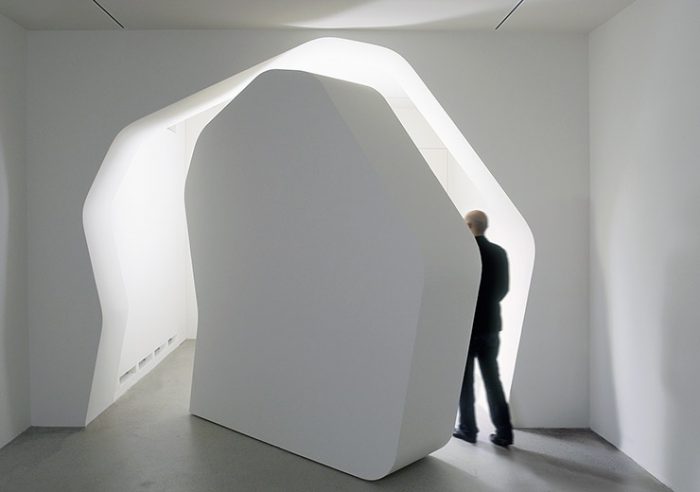
positive.negative is a strategic intervention into the existing gallery space. A dynamic object in two parts consisting of frame and infill, remakes the space into various scenarios for possible exhibitions. The mutability of the gallery opens up unexpected possibilities to rethink conventions of white-cube-art-spaces as a static framework. Positive.negative densely probes new forms of presenting photographie.
DON'T WON'T

Orientation and/or the actions that are linked to it are psychological impulses that influence, divide, promote, or block our everyday lives though constant decision-making. The ability to orient ourselves is essential to our survival: on the one hand, orienting ourselves as individuals in social structures and media, in brief, to find our way in society and to position ourselves within it, on the other hand recognizing spatial contexts to be able to reach our desired goal. Successful signage and the repetition of symbols and signs that shape and police us are key to our society.
CASA MORGANA

Casa.Morgana is somewhere else. Surrounded by neighboring homes dating from the late nineteenth century, the building is like an abstract volumetric study for a potential building and seems to have fallen out of context. Surrounding nature simulates a subtropical oasis and locates the residential sculpture between optical disturbance and atmospheric displacement. The three-story building consists formally of several differently sized cubes placed at staggered levels on top of one another, connected by a central stairway. The existing building from 1972 and its annexes from 1991 were reduced to their shells and then retaken with targeted interventions: not as a cosmetic make-over, but as a location that distils and continues the archaic and brutalist aesthetic from the time of the building’s original emergence.
POLICE STATION
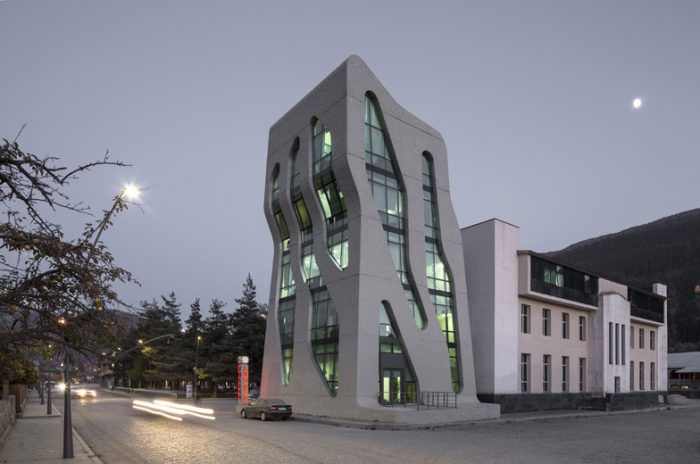
The project is situated in the heart of the old town of Mestia, next to the newly built city-hall. Its towerlike shape pays homage to the medieval stone towers which are traditional to Mestia’s mountainside region. The facade is comprised of prefabricated textured concrete and large openings which offer a maximum of transparency.
MUSEUM GARAGE
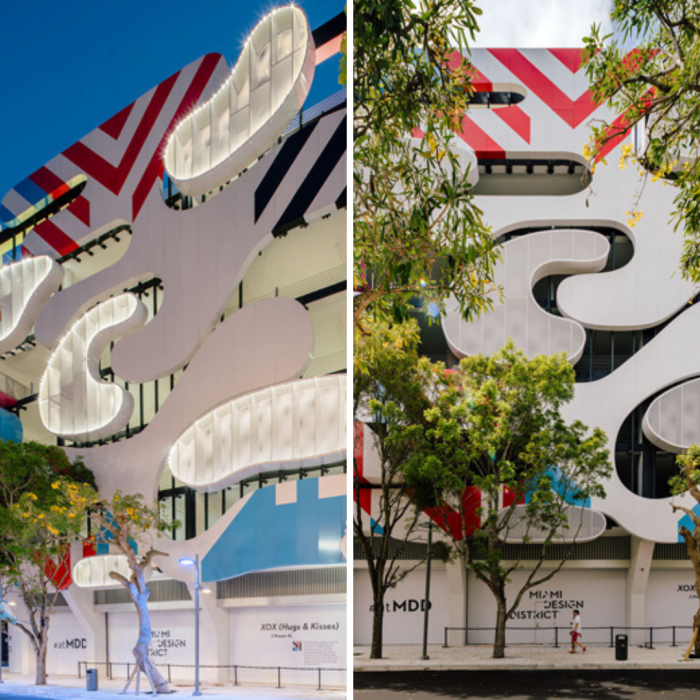
Our facade XOX’s appears as gigantic interlocking puzzle pieces that nestle at the corner with the forms of WORKac’s design. XOX’s enigmatic forms, emblazoned with stripes and bright colors, recall the aerodynamic forms of automotive design and appear to float above the sidewalk below. Smaller volumes, covered in metal screens project outward and are activated with embedded light at night.
HOUSE OF JUSTICE
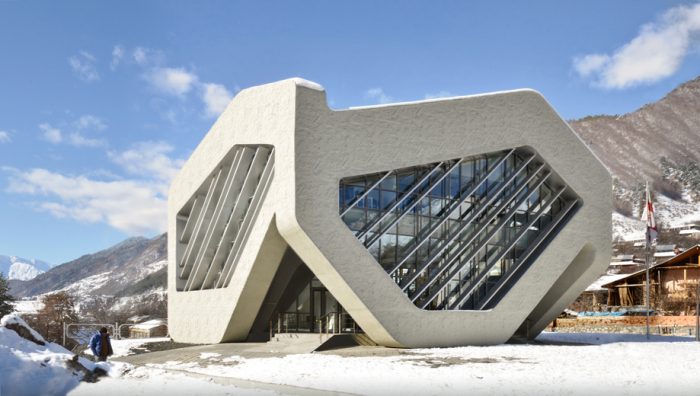
The House of Justice serves as a two storey civic centre for the people of Mestia, a village with a strong cultural heritage. Its concrete structure frames the spectacular landscape of the Caucasian Mountains. The building is part of an ensemble of new public buildings around the main central public plaza.
1001 LAMPS COLLECTION FOR GAIA & GINO
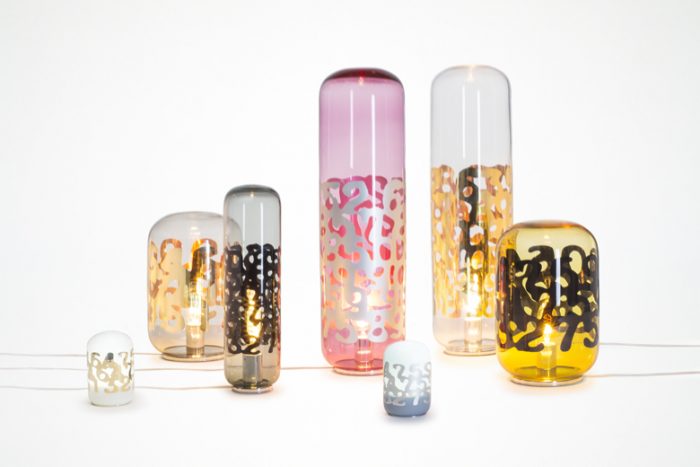
1001 table lamps are the first accessory project of architect Juergen Mayer H. 1001 consists of table lamps in 3 sizes and different colors and a portable rechargeable LED lamp in colored mouth blown glass with gold, silver, black or white serigraphic print. Juergen says: “1001 glows in the dark, echoing a wonderful lamp with Turkish calligraphic numbers melted into a continuous organic geometric pattern.”